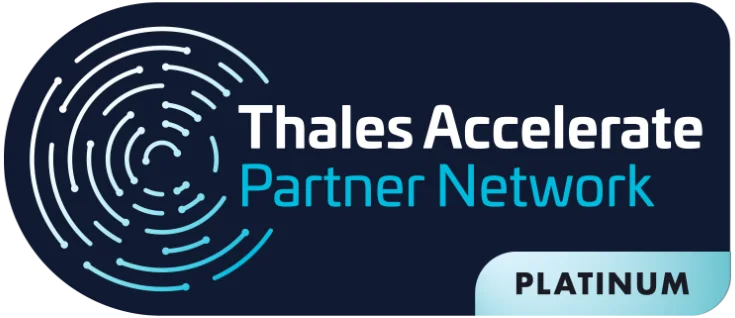The use of encryption software has been one of the most efficient methods for providing data security, especially for end-to-end protection transmitted between networks.
Companies and individuals also use encryption to protect confidential data stored on computers, servers and devices such as phones or tablets.
If you still have doubts about the efficient use of encryption software when carrying out different transactions over the Internet, take advantage of this article to clarify all the points.
Encryption software is widely used on the Internet to protect users
One example of the use of encryption software is data protection. In short, we have passwords, payment information and other personal information that should be considered private and sensitive.
How encryption works
The data, usually made up of plain text, is encrypted using an algorithm and an encryption key. This process generates a ciphertext that can only be viewed in its original form if it is deciphered with the correct key.
Decryption is simply the reverse process of encryption, following the same steps but reversing the order of operations. Encryption software basically falls into two categories: symmetric and asymmetric.
- Symmetric Cryptography
Also known as a “secret key”, only one key is used, also called a shared secret. This is because the system performing the encryption must share it with any entity that intends to decrypt the encrypted data.
Symmetric key encryption is generally much faster than asymmetric encryption, but the sender must exchange the key used to encrypt the data with the recipient before they can perform decryption on the ciphertext.
- Asymmetric encryption
Known as public key cryptography, it uses two different keys, i.e. a pair of keys known as the public key and the private key. The public key can be shared with everyone, while the private key must be kept secret.
The benefits of using encryption software
The main purpose of cryptography is to protect the confidentiality of digital data stored on computer systems, transmitted over the Internet or any other computer network.
Many companies and organizations recommend or require that confidential data be encrypted to prevent unauthorized persons from gaining access.
In practice, the best-known example is the data security standard used in the payment card sector. It requires customer card data to be encrypted when transmitted over public networks.
Encryption algorithms play a key role in ensuring the security of IT systems and communications. After all, they can provide not only confidentiality, but also elements that are considered key to data security:
- Authentication: the origin of the message can be verified;
- Integrity: proof that the content of a message has not been altered since it was sent;
- Non-repudiation: the sender of a message cannot deny sending the message.
Many Internet protocols define mechanisms for encrypting data that moves from one system to another – this is known as data in transit.
|
|
Cryptography being used in communication applications
Some applications use end-to-end encryption (E2EE) to ensure that data passing between two parties cannot be viewed by an attacker capable of intercepting the communication channel.
The use of an encrypted communication circuit, as provided by Transport Layer Security (TLS), between the web client and the web server software is not always sufficient to guarantee security.
Normally, the actual content being transmitted is encrypted by the software before being passed on to a web client and decrypted only by the recipient.
Messaging applications that provide E2EE include Facebook’s WhatsApp and Open Whisper Systems’ Signal. Facebook Messenger users can also receive E2EE messages with the “Secret conversations” option.
Current cryptographic challenges
For any current encryption key, the most basic method of attack is brute force. In other words, the hackers make several attempts in a row to find the right key.
The length of the key determines the number of possible keys, hence the viability of this type of attack. There are two important elements that show how strong the encryption used is. These are the algorithms used and the size of the key.
After all, as the size of the key increases, greater resources are also required in an attempt to break the key.
Currently, attackers also try to crack a target key through cryptanalysis. In other words, the process that tries to find some weakness in the key that can be exploited with less complexity than a brute force attack.
Recently, security agencies(such as the FBI ) have criticized technology companies that offer end-to-end encryption. It was claimed that this type of encryption prevents law enforcement authorities from accessing data and communications, even with a warrant.
The US Department of Justice has publicized the need for “responsible encryption”. That is, it can be released by technology companies under a court order.
Next steps
Key management is one of the biggest challenges in the strategy for using encryption software. After all, the keys to decrypt the ciphertext need to be stored somewhere in the environment. However, attackers usually have a good idea of where to look.
That’s why when an organization needs to access encrypted data, it usually puts encryption keys into stored procedures in the database management system. In such cases, the protection may be inadequate.
The next steps in improving the use of cryptography are the challenge of developing an information security plan capable of defining more reliable key storage structures, which is one of the weakest links in the application of corporate cryptography.
Security policies and methods should seek best practices in order to reduce malicious attempts to break and use cryptographic keys and invalidate the use of encryption software.
Now you know a little more about encryption software. Always keep up to date, subscribe to our newsletter and stay on top of Eval news and technologies. Keep following our content on the blog and also on our Linkedin profile.
About EVAL
A EVAL está a mais de 18 anos desenvolvendo projetos nos segmentos financeiro, saúde, educação e indústria, Desde 2004, oferecemos soluções de Autenticação, Assinatura Eletrônica e Digital e Proteção de Dados. Atualmente, estamos presente nos principais bancos brasileiros, instituições de saúde, escolas e universidades, além de diferentes indústrias.
Com valor reconhecido pelo mercado, as soluções e serviços da EVAL atendem aos mais altos padrões regulatórios das organizações públicas e privadas, tais como o SBIS, ITI, PCI DSS, e a LGPD. Na prática, promovemos a segurança da informação e o compliance, o aumento da eficiência operacional das empresas, além da redução de custos.
Inove agora, lidere sempre: conheça as soluções e serviços da Eval e leve sua empresa para o próximo nível.
Eval, segurança é valor.







